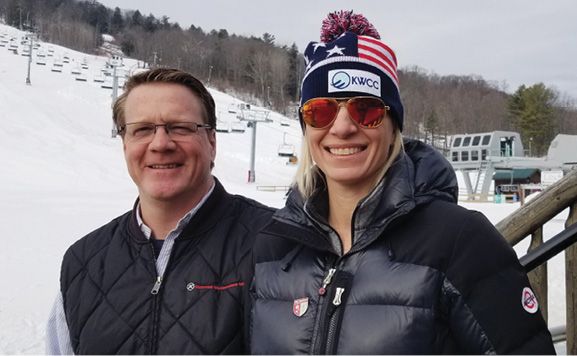
SKIING HISTORY
Editor Kathleen James
Art Director Edna Baker
Contributing Editor Greg Ditrinco
ISHA Website Editor Seth Masia
Editorial Board
Seth Masia, Chairman
John Allen, Andy Bigford, John Caldwell, Jeremy Davis, Kirby Gilbert, Paul Hooge, Jeff Leich, Bob Soden, Ingrid Wicken
Founding Editors
Morten Lund, Glenn Parkinson
To preserve skiing history and to increase awareness of the sport’s heritage
ISHA Founder
Mason Beekley, 1927–2001
ISHA Board of Directors
John Fry (1930-2020), Chairman
Seth Masia, President
Wini Jones, Vice President
Jeff Blumenfeld, Vice President
John McMurtry, Vice President
Chan Morgan, Treasurer
Einar Sunde, Secretary
Richard Allen, Skip Beitzel, Michael Calderone, Christin Cooper, Art Currier, Dick Cutler, Chris Diamond, David Ingemie, Joe Jay Jalbert, Rick Moulton, Wilbur Rice, Charles Sanders, Bob Soden (Canada)
Presidential Circle
Christin Cooper, Billy Kidd, Jean-Claude Killy, Bode Miller, Doug Pfeiffer, Penny Pitou, Nancy Greene Raine
Business & Events Manager
Kathe Dillmann
P.O. Box 1064
Manchester Center VT 05255
(802) 362-1667
kathe@skiinghistory.org
Membership Services
Laurie Glover
(802) 375-1105
laurie@skiinghistory.org
Corporate Sponsorships
Peter Kirkpatrick
(541) 944-3095
peterk10950@gmail.com
Bimonthly journal and official publication of the International Skiing History Association (ISHA)
Partners: U.S. Ski and Snowboard Hall of Fame | Canadian Ski Museum and Hall of Fame
Alf Engen Ski Museum | North American Snowsports Journalists Association | Swiss Academic Ski Club
Skiing History (USPS No. 16-201, ISSN: 23293659) is published bimonthly by the International Skiing History Association, P.O. Box 1064, Manchester Center, VT 05255.
Periodicals postage paid at Manchester Center, VT and at additional mailing offices. Postmaster: Send address changes to ISHA, P.O. Box 1064, Manchester Center, VT 05255
ISHA is a 501(c)(3) public charity. EIN: 06-1347398
Written permission from the editor is required to reproduce, in any manner, the contents of Skiing History, either in full or in part.
Short Turns: West Mountain, Back to the Future
For six decades, West Mountain in upstate New York has been bringing skiers—and racers—into the sport.
By Paul Post
Spencer and Sara Montgomery purchased West Mountain in 2013 and have given the family-oriented ski area a $17 million makeover.
Spencer and Sara Montgomery moved east to West Mountain, where they’re pursuing the adventure of a lifetime in his hometown of Queensbury, New York. They’ve given the Southern Adirondacks
resort a $17 million makeover since purchasing it in 2013, including three new chairlifts, 40,000 feet of snowmaking pipeline, 200 new snow guns, four groomers and a 500-foot lift for the tubing park.
It’s quite a change for a couple who met on the Chicago trading floor and spent 10 years in Colorado, skiing at some of the world’s most famous resorts.
West Mountain has been a family-oriented resort since the founding Brandt clan opened it on Christmas Day 1962. By installing lights for night skiing, they quickly attracted local curiosity seekers and developed a strong customer base throughout the region. The
Adirondack Northway (Interstate 87) opened in the early 1960s, providing a direct link from the Albany area, about an hour away. While small in size, with a 1,000-foot vertical drop, the center has made a big contribution to the sport.
“It’s a feeder mountain,” Spencer said. “I’m willing to bet that West Mountain has taught more people how to ski and is one of the top training mountains in the United States. We have 1,600 kids in after-school programs. That’s our history and our future.”
The site’s steep trails have hosted competitive racing since 1962, when the late Tom Jacobs, who founded the ski school, begain coaching young racers (see obituary). With on-mountain upgrades complete, the Montgomerys are now turning their attention to developing a full-time ski racing

academy. One of their first moves was to hire Steve Lathrop, a former five-year World Cup competitor on the U.S. “A” Ski Team, who previously worked at Stratton Mountain School in southern Vermont. Lathrop is starting his third year as West Mountain’s alpine race director.
A New Hampshire native, Lathrop learned how to ski on a rope tow built by his father, who served with the 10th Mountain Division during World War II. At one point, Lathrop was ranked 16th in the world in slalom. If not for injury, he would have gone to the 1972 Winter Olympics in Sapporo, Japan, so he knows what a good racing program needs and believes West Mountain has all the key elements.
In January 2020—prior to the COVID-19 shutdown—West Mountain hosted a four-day FIS event including two huge U-16 and U-19 races, with 225 racers each day from all over the East. A full slate of high school, masters and New York State Racing Association competition is on tap for the 2020–2021 season.
This fall, West Mountain also opened a brand-new ski racing academy that allows student-athletes to train full time. Those from outside the area, a half-dozen from western New York and New York City, take classes remotely through Queensbury High School or their own home school. Next year, plans call for having a full-fledged lodging component as well.
“The academy is for older kids who are able to live on their own and handle their studies and ski training,” Sara Montgomery says. “A lot of kids at that U-19 level drop out of ski racing because it becomes unaffordable for their families, with all of the travel and the high cost of equipment. This gives them the opportunity to continue racing at a competitive level at a more affordable rate.”
With good coaching and top-notch facilities, it might just be a matter of time before a West Mountain racer achieves international success. “I really believe this mountain has everything needed to develop world-class ski racers,” Lathrop says.
California Ski Library: Chip In!
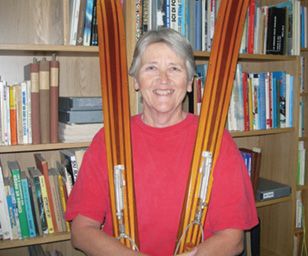
Since 2004, ski historian and ISHA Award winner Ingrid Wicken has housed her California Ski Library in a 960-foot modular building behind her home in Norco, California. The library has grown steadily over the years and is now one of the most extensive collections of ski books, magazines, photographs and paper memorabilia in the United States. The photo archive, for example, includes images of U.S. skiing from the 1930s through the 2000s, covering Sun Valley, Aspen, Squaw Valley, Mammoth Mountain, Yosemite, Mount Hood, American ski jumping, and many California ski areas, large and small. Her book collection numbers 4,500 titles from around the globe. She also has located many rare and hard-to-find brochures, programs, research documents and correspondence from ski racers, writers and resort developers.
Now Ingrid needs our help! Freestyle pioneer Doug Pfeiffer—honored member of both the U.S. and Canadian Ski and Snowboard Halls of Fame—has recently donated 99 boxes of one-of-a-kind ski books and vintage magazines. The building is chock full, and Wicken has launched a Go Fund Me page to add another 480 square feet of display and storage space.
The California Ski Library is a 501(c)(3) nonprofit, so donations are tax-deductible. Chip in to the fundraising campaign online at: https://tinyurl.com/
CASkiLibrary. Learn more about Ingrid’s library at skilibrary.com.
COVID-19 Puts Historic Ski Train on Hold Again
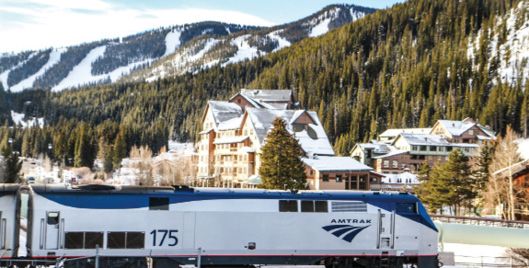 The Winter Park Express ski train, which has hauled Denver skiers through the Moffat Tunnel on and off since 1940, will take another hiatus for the 2020–2021 winter season. According to a Winter Park press release, Amtrak has been reducing the number of seats sold on each train to enable social distancing during the pandemic. “After evaluating seating options on the Winter Park Express … it is not possible to operate the train successfully this season,” read the release, while noting a hopeful return for the popular rail service in 2022.
The Winter Park Express ski train, which has hauled Denver skiers through the Moffat Tunnel on and off since 1940, will take another hiatus for the 2020–2021 winter season. According to a Winter Park press release, Amtrak has been reducing the number of seats sold on each train to enable social distancing during the pandemic. “After evaluating seating options on the Winter Park Express … it is not possible to operate the train successfully this season,” read the release, while noting a hopeful return for the popular rail service in 2022.
In March 2015, to celebrate its 75th anniversary, Winter Park revived the train as a one-weekend experiment with Amtrak. Tickets sold out fast, so Amtrak scheduled regular weekend trips—leaving from Denver’s Union Station for the 56-mile journey across the Continental Divide—beginning in January 2017. To learn more about the history of ski trains, go to: skiinghistory.org/history/ski-trains-history.
Lost Ski Areas of Japan
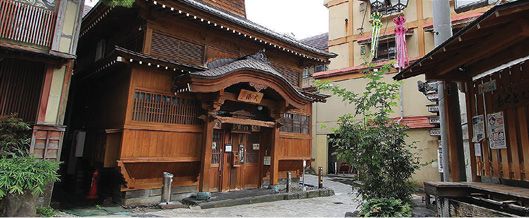
Japan’s skiing history is rich and varied. People had long used simple homemade skis to get around, but in the 1930s Hannes Schneider arrived from the Arlberg to introduce his downhill technique.
From then on, as in Europe and North America, skiing grew as a popular sport. Hundreds of ski areas opened. By the 1980s there might have been more ski areas in Japan than anywhere else—at least 700, some open 24 hours a day.
During the recession that followed the 1989 collapse of Japan’s real-estate bubble, skier visits dropped from more than 20 million to nearer five million. Hundreds of Japanese ski areas closed, many quickly overgrown by bamboo forests.
Now Andrew Lea, creator of Japan’s largest ski-oriented website SnowJapan.com, has launched http://SnowJapanHistory.com. The new site documents all of these lost Japanese ski areas. Lea is meticulously cataloguing the former areas, making personal visits, taking current pictures and adding aerial images. The work in progress so far has more than 150 former ski areas and almost 1,000 pictures.
Among the listings, for example, is Goshiki in Yamagata, which opened in 1911 when the Austrian Egon Edler von Kratzer skied there, and closed in 1998. Nanamaki, located less than 3km (2 miles) from Nozawa Onsen (home to the world-famous Japan Ski Museum) operated only 10 years, until 1982. Dedicated skiers walked a kilometer from the rail station, crossing a river on a cable-pulled ferry to reach the slopes. —Patrick Thorne
The Man Who Skied on Rocks
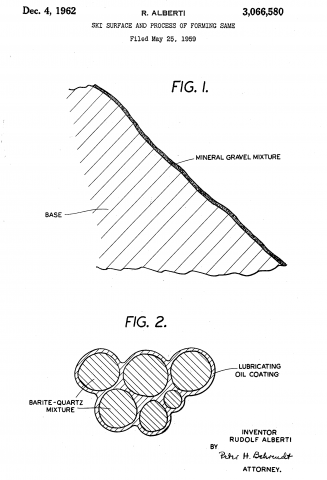 When snow is unavailable, skiers will glide on anything: grass, pine needles, sawdust, sand dunes, volcanic ash, carpet, plastic mat, soap flakes, powdered mica and soda crystals.
When snow is unavailable, skiers will glide on anything: grass, pine needles, sawdust, sand dunes, volcanic ash, carpet, plastic mat, soap flakes, powdered mica and soda crystals.
In 1958, German industrialist Dr Rudolf Alberti (1907–1974) patented the concept of skiing on gravel. Alberti owned a mine in the Harz Mountains (still going today) that produced barium sulphate—a bright white dye—and calcium fluoride. The ore contained barite, or heavy spar, a very dense mineral used today in X-ray shielding, rubber mudflaps and oil-drilling mud. American industry alone uses about 3.3 million tons of the stuff annually.
Alberti noticed that barite nodules have a very low friction co-efficient and is dust free. He built a 1,300-foot-long (400-meter) ski run and covered it with a mix of river gravel and barite, about six inches (15cm) deep.
Contemporary reports recorded the surface proved pretty good for skiing, but that skis disintegrated due to the heat generated. Alberti ordered up a stock of skis with steel bases, and with a concrete mixer coated the gravel with used engine oil. This reportedly “dramatically increased ski speed but producing some hair-raising results and near disastrous falls.” Alberti received patents in Germany and the United States.
The slope does not appear ever to have operated as a commercial venture. But to this day Alberti’s home town, St. Andreasberg, has a small ski area operated by Alberti-Lifts. —Patrick Thorne
Sarah Lewis Out at FIS
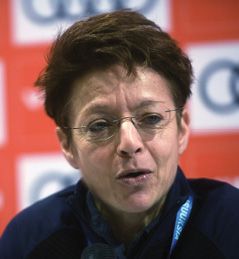 The FIS Council abruptly dismissed Sarah Lewis on October 9 from her post as secretary general, a job she held for 20 years. The FIS announced the decision in a terse one-sentence statement that said the move was “based on a complete loss of confidence,” without providing specifics. The statement was amended within days, and no longer includes that verbiage.
The FIS Council abruptly dismissed Sarah Lewis on October 9 from her post as secretary general, a job she held for 20 years. The FIS announced the decision in a terse one-sentence statement that said the move was “based on a complete loss of confidence,” without providing specifics. The statement was amended within days, and no longer includes that verbiage.
Lewis, 55, was a member of the British alpine national team from 1982 to 1988, and participated in the 1987 Ski World Championships and 1988 Winter Olympics in Calgary, before joining the FIS in 1994 as a Continental Cups coordinator.
Lewis had been considered a candidate to run for FIS president to succeed Gian-Franco Kasper, who last year announced plans to step down at the next International Ski Congress, according to European media reports. The election has been postponed several times due to the pandemic, and is now scheduled for June 2021.
The current Swiss ski federation president, the 1993 downhill world champion Urs Lehmann, has declared his candidacy to replace Kasper. Two other possible contenders are FIS vice president Mats Arjes and Johan Eliasch, the London-based billionaire CEO of the Head Sport group, who was nominated by the British national ski association (GB Snowsport). FIS has had only two presidents—both Swiss men—over the past 70 years. Marc Hodler held the top spot from 1951 to 1998, with Kasper taking over for him. —Greg Ditrinco
The Crown’s Royal Avalanche isn’t a Snow Job
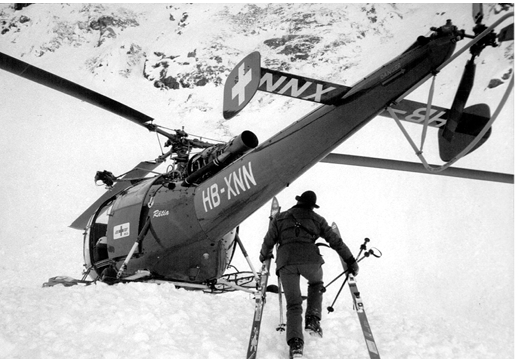 Television isn’t known for accurately depicting historic events. Where’s the drama, and ratings, in that?
Television isn’t known for accurately depicting historic events. Where’s the drama, and ratings, in that?
The popular Netflix series The Crown, which chronicles the reign of Queen Elizabeth II, gets mixed reviews on that score. Critics have applauded the show, which has 39 Emmy nominations, winning 10 times. The Telegraph, Britain’s daily broadsheet, calls it “TV’s best soap opera,” a format not known for its accuracy. While historians quibble, the BBC claims the show, now in its fourth season, generally follows the facts.
The fourth-season episode “Avalanche” opens on an incident during a ski holiday at Klosters, Switzerland. The episode begins with a spectacular dry-snow avalanche obliterating a couloir in the Alps. The next shot shows the Queen and Prince Philip in Buckingham Palace, as her private secretary Martin Charteris reports the involvement of four skiers, including Prince Charles, and that two of the group were swept away. No one can say yet whether Charles is safe, and the family contemplates the possibility that he has died.
ISHA members will remember this March 10, 1988 incident. While skiing on steep off-piste terrain on the Gotschnagrat, two of Charles’ friends were swept up in the avalanche, which just missed the prince and local guide Bruno Sprecher. Major Hugh Lindsay, 34, a former equerry to the Queen, was killed, and Patricia Palmer-Tomkinson broke both legs but survived. The royal party flew home to London on March 12, accompanying Lindsay’s body. 
Why's it called that?
Dead End? Not for Skiers
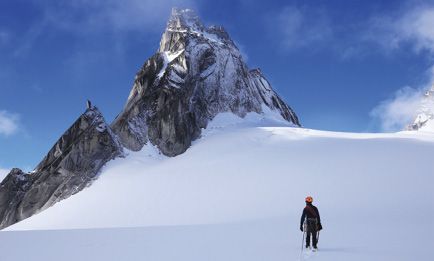
Touted as North America’s equivalent of the French Alps, the granite spires of the Bugaboos tower over glaciers in eastern British Columbia. First officially noted by a surveying expedition in the late 1800s, the range attracted Europeans to the region during a luckless mini-gold rush in 1895. Miners staked out claims, but the modest deposits turned out to be galena and pyrite (whose yellow metallic luster gave it the nickname of fool’s gold). Frustrated prospectors soon anointed the area “bugaboo,” their term for a dead end. Deeper etymological roots, probably Celtic in origin, date to the mid-18th century or so, with the meaning of “an object of fear or alarm.” Any way you look at it, the Bugaboo name was an intimidating, rather than inviting, moniker for the mountain range. The Bugaboo name stuck, but the miners did not. What gold seekers abandoned, mountaineers soon championed, and one after another the flinty spires were summited. Next to arrive were adventurous skiers, with the Bugaboos becoming the cradle of heliskiing in the mid-1960s.
SKI ART
Edwin Holgate (1892–1977)
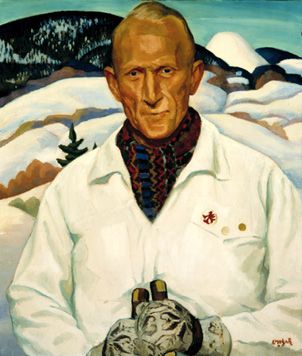 Edwin Holgate was born in Allandale, Ontario in 1892 and died in Montreal in 1977. He painted “The Skier,” a portrait of his friend Jackrabbit Johannsen, circa 1935. Oil on canvas (66.5 by 56.6 cm). Montreal Museum of Fine Arts, Arthur M. Terroux Bequest (Acquisition No. 1980.9). Photo for MMFA by Brian Merrett. Copyright: Jonathan Rittenhouse
Edwin Holgate was born in Allandale, Ontario in 1892 and died in Montreal in 1977. He painted “The Skier,” a portrait of his friend Jackrabbit Johannsen, circa 1935. Oil on canvas (66.5 by 56.6 cm). Montreal Museum of Fine Arts, Arthur M. Terroux Bequest (Acquisition No. 1980.9). Photo for MMFA by Brian Merrett. Copyright: Jonathan Rittenhouse
Nobody had to be told who “The Skier” was! So it’s surprising that this painting of Canadian ski pioneer Hermann Smith-Johannsen, known to many as “The Chief” and to even more as “Jackrabbit,” is not better known.
Edwin Holgate, his artist friend, painted this portrait in a typically direct approach—both in the way that Johannsen lived his life and the way that Holgate portrayed his subjects. Jackrabbit was proud to bear the symbol of the Canadian Red Birds ski club on his chest, while the Norwegian patterned gloves symbolize his heritage. The Laurentian hills around St. Sauveur, or perhaps Mont Tremblant, provide the backdrop.
He studied at the Art Association of Montreal before leaving for Paris to attend the Académie de la Grande Chaumière in 1912. He was visiting Ukraine when the war broke out and had to make his way back to Canada via Siberia and Japan. He joined the 4th Canadian Division that saw action on the western front and, after the armistice, was stationed in Flanders.
Holgate joined the Beaver Group, a liberal organization that included about a dozen women artists in Montreal in 1920. He was married that year, and the couple moved to Paris, where he was influenced by young Russian emigré painters. Back in Montreal in 1922, he had his first exhibition at the Arts Club and was later an instructor in wood engraving at the École des Beaux Arts. He joined the famous Group of Seven prominent landscape painters—as the ninth member!—in 1929 and was elected to full membership in the Canadian Academy of Arts in 1935. In the 1920s and 1930s, Holgate became well known for his woodcuts, book illustrations, landscapes and murals—he created one for the Canadian Pavilion at the World’s Fair in New York in 1939—and for portraits, too: Around 1935 he painted his friend Jackrabbit, a perfect model for “The Skier.”
Holgate secured a position as a war artist in World War II in England, but there were “difficulties,” and once back in Montreal, found that the art scene had changed…so he moved to the Laurentians. He died in May 1977. The National Gallery of Canada held a retrospective of his work in 1975 and a second retrospective was mounted by the Montreal Museum of Fine Arts in 2005. — E. John B. Allen
Table of Contents
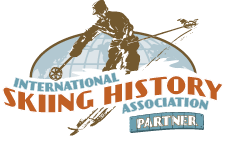
Corporate Sponsors
ISHA deeply appreciates your generous support!
WORLD CHAMPIONSHIP ($3,000 AND UP)
Gorsuch
Polartec
WORLD CUP ($1,000)
Aspen Skiing Company
BEWI Productions
Bogner
Boyne Resorts
Dale of Norway
Darn Tough Vermont
Dynastar | Lange | Look
Fairbank Group: Bromley, Cranmore, Jiminy Peak
Gordini USA Inc. | Kombi LTD
HEAD Wintersports
Hickory & Tweed Ski Shop
Intuition Sports, Inc.
Mammoth Mountain
Marker-Volkl USA
National Ski Areas Association (NSAA)
Outdoor Retailer
Rossignol
Ski Area Management
Ski Country Sports
Snowsports Merchandising Corporation
Sport Obermeyer
Sports Specialists, Ltd.
Sun Valley Resort
Vintage Ski World
Warren and Laurie Miller
World Cup Supply, Inc.
GOLD ($700)
Race Place | BEAST Tuning Tools
The Ski Company (Rochester, NY)
Thule
SILVER ($500)
Alta Ski Area
Boden Architecture PLLC
Dalbello Sports
Ecosign Mountain Resort Planners
Fera International
Holiday Valley
Hotronic USA, Inc. | Wintersteiger
MasterFit Enterprises
McWhorter Driscoll, LLC
Metropolitan New York Ski Council
New Jersey Ski & Snowboard Council
NILS, Inc.
Russell Mace Vacation Homes
Schoeller Textile USA
Scott Sports
Seirus Innovations
SeniorsSkiing.com
Ski Utah
Swiss Academic Ski Club
Tecnica Group USA
Trapp Family Lodge
Western Winter Sports Reps Association
World Pro Ski Tour

